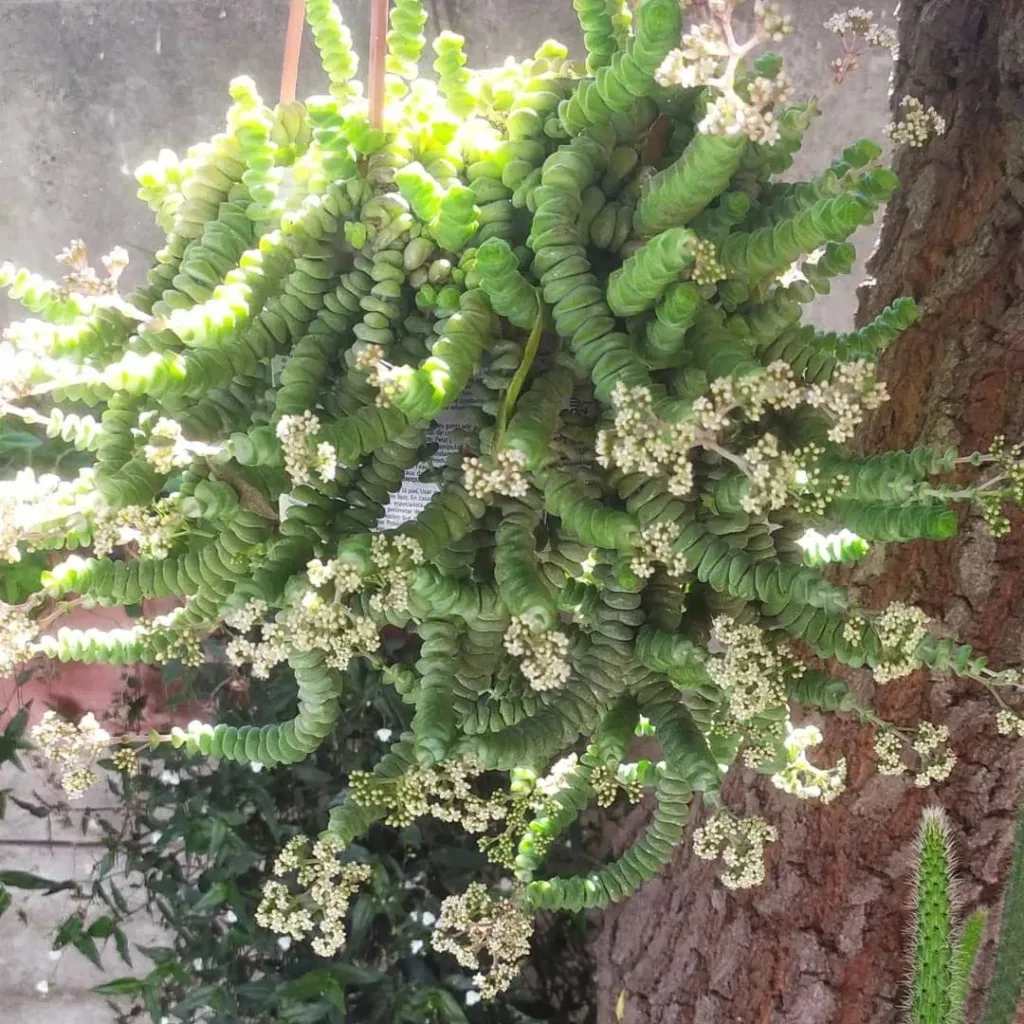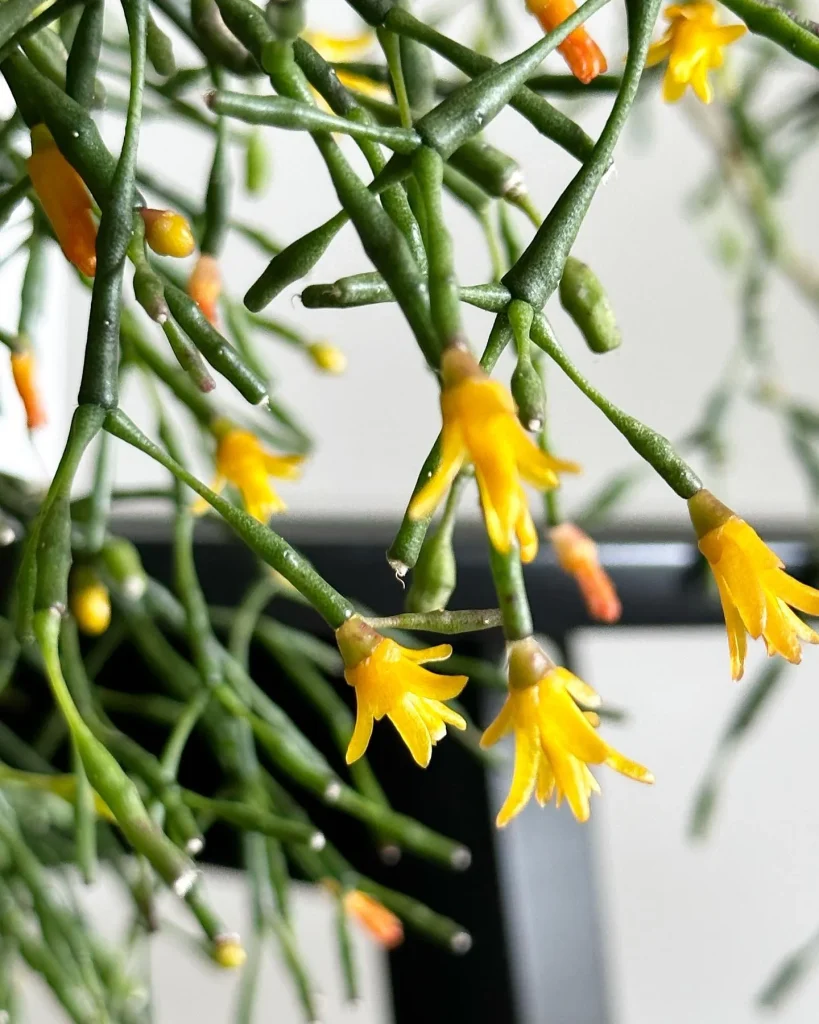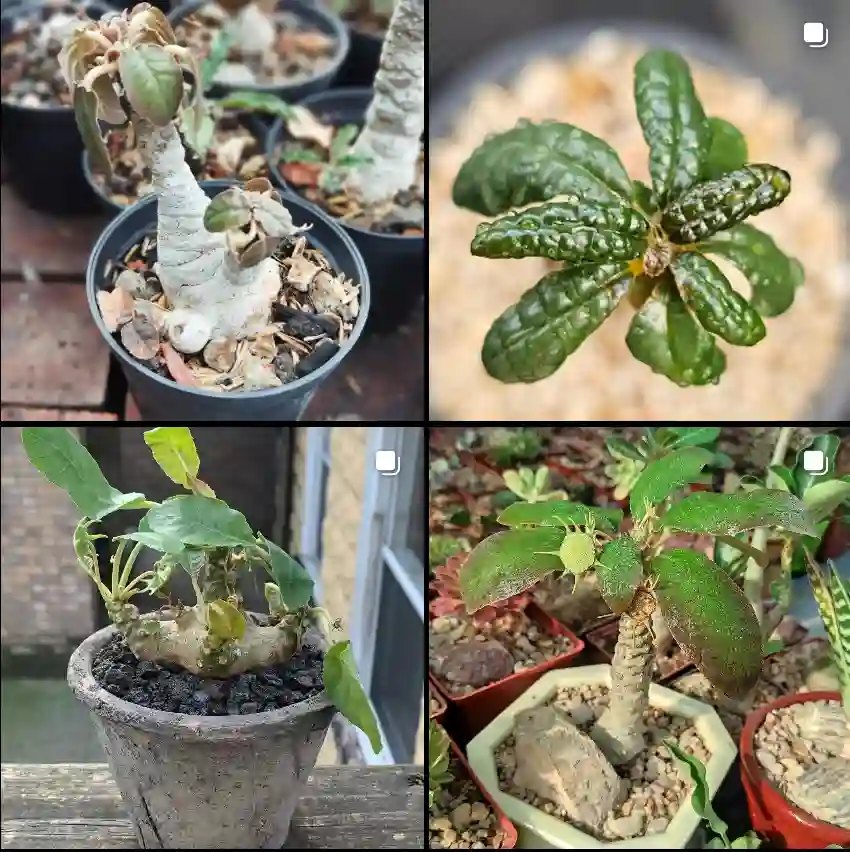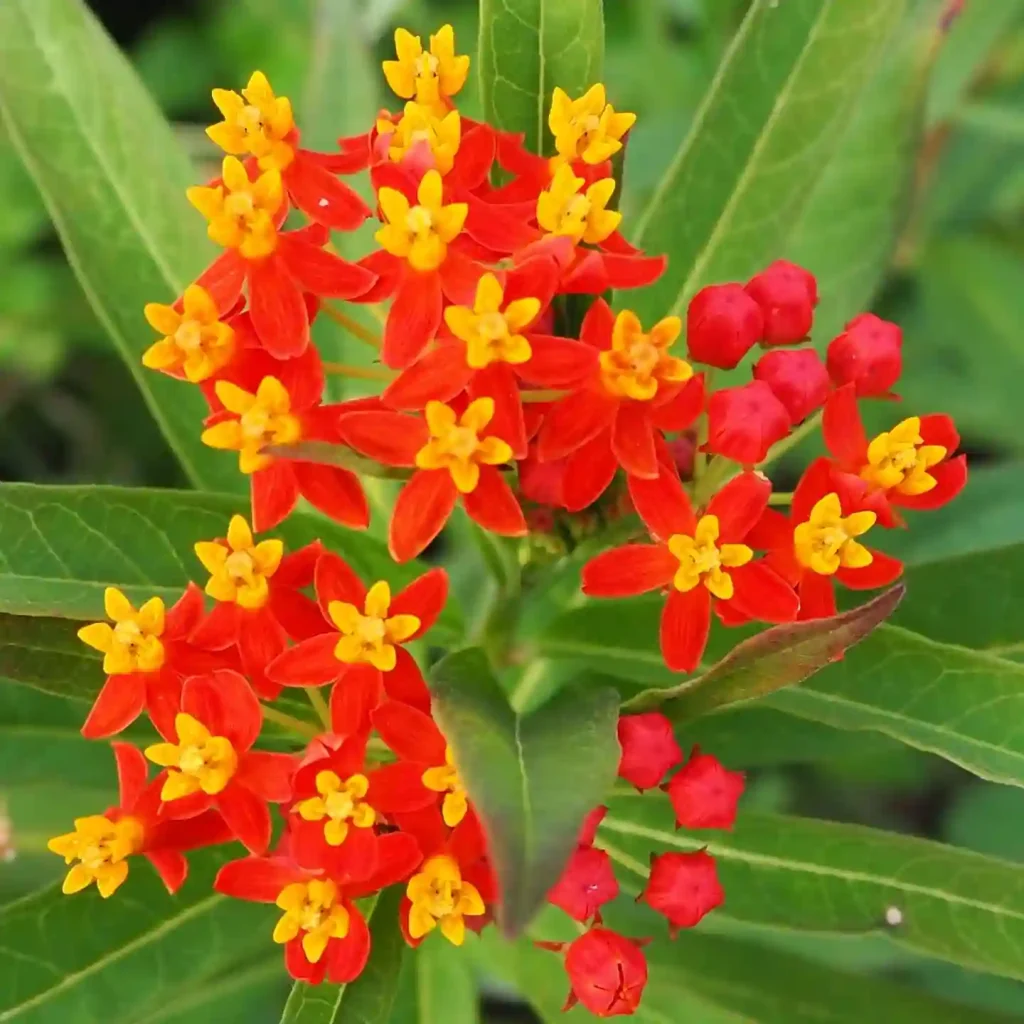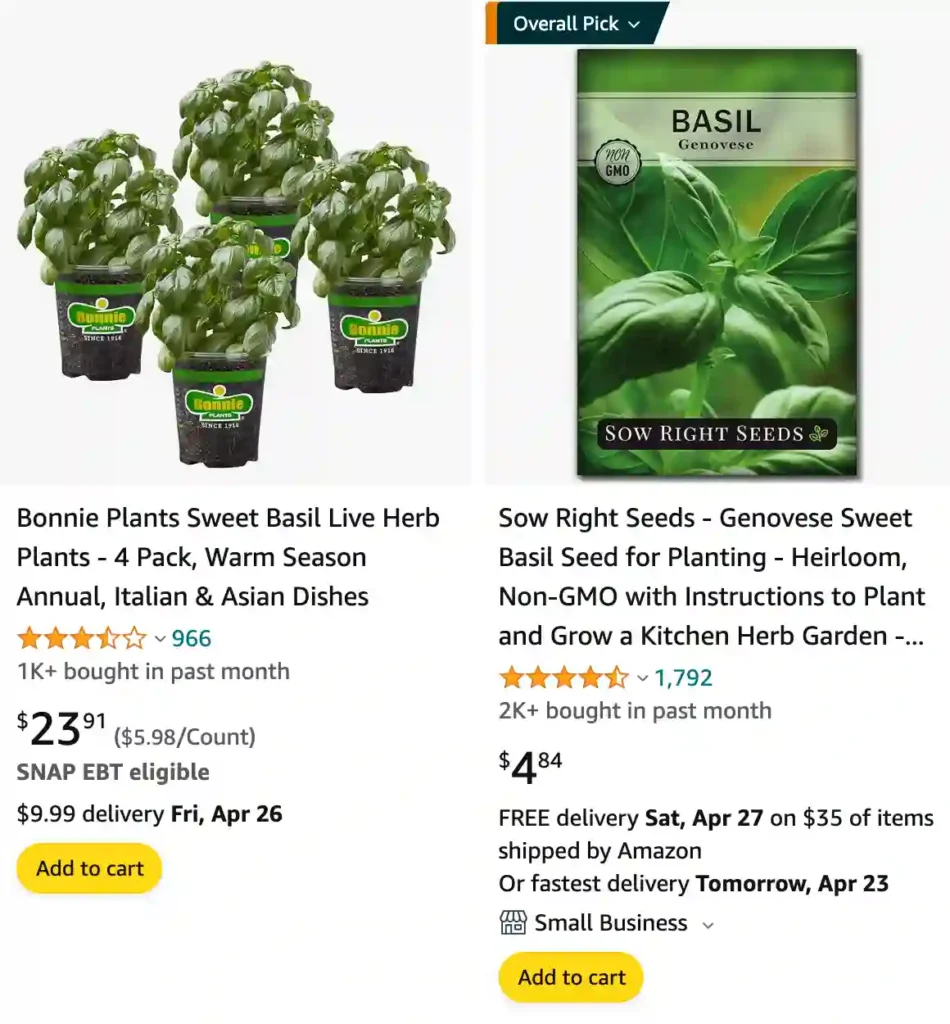
66 Species in Genus Ocimum
What is Ocimum Basilicum?
Ocimum basilicum, commonly known as basil, is a popular herb in the mint family. It is widely used in cooking for its aromatic leaves, which have a distinctive, slightly sweet and peppery flavor. Basil is often associated with Mediterranean and Asian cuisines, and it thrives in warm, sunny climates.
How to grow Ocimum Basilicum?
Growing Ocimum basilicum is relatively easy. Start by sowing seeds in a well-draining, rich potting mix. Basil prefers a sunny location, so choose a spot that gets at least 6 hours of sunlight daily. Keep the soil moist but not waterlogged. If you’re planting it in a container, ensure there are drainage holes to prevent root rot. Basil grows well in temperatures between 70°F and 85°F (21°C – 29°C). Regularly pinch off the tips of the plant to encourage bushy growth and prevent flowering, which can make the leaves bitter.
How to care for basil plant?
Caring for my basil plant is a surprisingly rewarding task. I love seeing it flourish under my care, and the smell is simply amazing. The key seems to be plenty of bright, indirect sunlight and keeping the soil moist but not soggy. I try to be really careful not to water the leaves directly as it seems to lead to problems. Whenever I see my basil start to flower, I pinch off the blooms so the plant puts more energy into growing leaves rather than seeds. With a little attention, I get bushels of fresh, aromatic basil which makes all my summer salads and pasta dishes taste incredible!
How do i trim my basil plant?
Trimming my basil plant always feels a bit counterintuitive, but it’s the best way to keep it growing full and bushy. I look for stems with healthy leaves and then follow them down until I find a set of smaller leaves growing off to the sides. Then, I make a clean snip with some sharp scissors just above those side leaves. I always try to take off at least a third of the plant when I prune. Sometimes it feels like I’m harvesting too much, but I’ve learned that the plant always springs back even stronger, and I get to enjoy all that wonderful fresh basil in the meantime!
When to plant basil?
I find basil is a bit of a diva when it comes to weather, so I always wait until the soil warms up and the nights are reliably above 50°F (10°C). That way, I know those delicate leaves won’t get shocked by the cold. Even with warmer temperatures, I still like to start some basil seeds indoors to get a jump start. But when it comes to planting outside, I wait until after the threat of any last frosts is gone, and the ground feels cozy to the touch. That usually works out to be sometime in late spring or early summer for me.
How often to water basil plant?
Figuring out how often to water my basil plant has been a bit of trial and error. I used to think more was better, but I’ve learned basil likes things a bit on the drier side. I try to do the “finger test” where I stick my finger a couple of inches into the soil. If it feels dry, it’s time for a good, deep watering. But if it still feels moist, I wait a day or two. In my experience, it’s always better to let the basil dry out a bit rather than accidentally overwatering it. During hot summer months, this usually means watering every other day or so.
What does a basil plant look like?
Basil plants are beautiful and come in different varieties, but the most common type (sweet basil) has these key features:
Bright Green Leaves: The leaves are oval-shaped, a bit shiny, and have a vibrant green color. Sometimes the leaves can have a slight purple tinge.
Square Stems: Basil is part of the mint family, and like other mint plants, it has a unique square-shaped stem.
Delicate Flowers: When basil is allowed to flower, it produces small white or purplish flowers arranged in clusters.
Some popular basil varieties have slightly different looks:
Purple Basil: Has beautiful deep purple leaves.
Thai Basil: Features smaller, slightly pointier leaves and purple stems.
Why is my basil plant wilting?
It’s always frustrating when my basil plant starts to wilt! I’ve learned a few things might be going wrong:
Underwatering: This is the most common culprit. If the soil feels parched and the leaves are drooping and crispy, a good, deep watering is usually the fix. But I wait for the soil to dry out a bit before watering again so I don’t overdo it.
Overwatering: Surprisingly, overwatering can make basil look just as sad. If the soil feels constantly soggy and the leaves look yellow and droopy, the roots might be rotting. I try to let the soil dry out a bit and then re-evaluate.
Too Much Sun: Sometimes, especially during scorching summer days, too much direct sun can stress my basil out. If my basil is in a pot, I try moving it to a slightly shadier spot.
Pests or Disease: Occasionally, if my basil is really struggling, it could be a sign of pest damage or a fungal disease. I inspect the whole plant closely, looking for any signs of bugs or unusual spots on the leaves.
It often takes me a little investigation to figure out the exact issue, but solving the problem and watching my basil perk back up is so satisfying!
How to plant basil inside?
Planting basil inside is a perfect way to have fresh herbs all year! Here’s how I do it:
Choose the Right Pot: I like to use a pot with good drainage holes to prevent the soil from getting soggy. A size that’s at least 6 inches across works well.
Use the Right Soil: Basil likes rich, well-draining soil. I either pick up a premium potting mix or amend regular potting soil with some compost.
Sow Seeds or Start with Seedlings: I can either sprinkle seeds into the pot or purchase pre-started basil seedlings from a garden center. If using seeds, I sow them about ¼ inch deep and gently mist them with water to keep them moist.
Plenty of Sun: Basil loves light! I find the sunniest spot in my house, a south-facing window is ideal. If natural light is a problem, a grow light is a great option.
Watering with Care: I keep the soil consistently moist but not wet. Letting it dry out a little between waterings helps prevent issues with root rot.
With a little sunshine and regular care, I have vibrant basil growing on my kitchen windowsill in no time!
Why is my basil plant dying?
Watching my basil plant start to die is always heartbreaking! There are a few common reasons why this might happen:
Watering Issues: Both underwatering and overwatering can cause problems. Underwatering will cause wilting and dry leaves. Overwatering can lead to soggy soil, yellow leaves, and root rot.
Insufficient Sunlight: Basil is a sunshine lover! If it’s not getting at least 6 hours of bright light each day, it will start to struggle. Moving my basil to a sunnier spot often works wonders.
Temperature Stress: Basil hates the cold. A sudden temperature drop or exposure to chilly drafts can cause it to weaken and die. If possible, I keep my basil away from cold windows and air vents.
Pests or Diseases: Basil can be susceptible to pests like aphids or fungal diseases. If I see any discolored spots on the leaves or tiny bugs, that’s a red flag that something more serious might be going on.
Rootbound: If my basil’s been in the same pot for a while, the roots might be crowded and unable to get enough nutrients. Repotting it into a slightly larger container with fresh soil can help.
Sometimes it takes a little detective work, but figuring out what’s stressing my basil out is the first step to helping it recover!
Do basil plants need full sun?
Ideal: Full sun, meaning at least 6-8 hours of direct sunlight every day. This encourages lots of big, flavorful leaves and healthy growth.
Acceptable: Basil can get by with some partial shade, especially during the hottest part of the day in scorching climates. Protecting it from intense afternoon sun can prevent the leaves from getting sunburned.
Not Ideal: While basil won’t immediately die in a
What to plant with basil?
Tomatoes: A classic pairing! Basil improves the flavor of tomatoes, deters pests, and attracts beneficial insects like pollinators.
Peppers: Similar to tomatoes, peppers enjoy the pest-repelling qualities of basil and benefit from the enhanced pollination.
Root Vegetables: Root vegetables like carrots, beets, and radishes enjoy having basil nearby as it helps keep soil pests at bay.
Herbs: Many herbs make great companions for basil. Oregano, parsley, chamomile, and chives all share similar growing requirements and deter pests.
Flowers: Marigolds and nasturtiums are excellent trap crops near basil, attracting pests away from your prized herb. Plus, they add a pop of color to your garden!
How many basil plants per pot?
Pot Size: Larger pots can handle more plants. Here’s a general guideline: 6-inch pot: 1 basil plant
10-inch pot: 2-3 basil plants
12-inch pot or larger: 3-4 basil plants
Variety: Basil comes in many varieties, with some being larger and bushier than others. Consider the mature size of the type of basil you’re growing.
Desired Outcome: If you want large, bushy plants for big harvests, give them plenty of space. If you’re okay with smaller plants, you can fit a few more in the pot.
Here’s my personal approach:
Starting from seed: I usually sow several seeds per pot and then thin them out to the strongest 1-3 plants once they have a few sets of true leaves.
Transplanting seedlings: I plant one strong seedling per 6-inch pot, or space multiple seedlings about 6-12 inches apart in larger containers.
How to collect seeds from basil plant?
Let it Flower: The key to collecting basil seeds is to allow the plant to flower. Resist the urge to pinch off flower buds as you normally would to prolong leaf production. Once flowers appear, leave them to fully develop and dry on the plant.
Watch for Seed Development: After the flowers fade, they’ll start to form small, brown seed pods. Keep an eye on these, as they’ll continue to dry and darken. The seeds are ready for harvest when the pods look fully dry and start to turn crisp.
Harvesting the Seeds: Whole Stems: If you have a lot of seed pods, carefully cut off entire flower stalks. Place them upside down in a paper bag and let them dry further for a few days.
Individual Pods: For smaller amounts, gently pluck off the individual dried pods.
Extracting the Seeds: Once fully dry, the pods will be easy to break open. Here’s how: Rubbing: Gently rub the pods or flower stalks between your fingers to release the tiny black seeds.
Crushing: Place dried pods in a bag and gently crush with a rolling pin.
Cleaning and Storage: Winnowing Pour the seeds and chaff into a shallow dish and gently blow to separate the lighter chaff from the heavier seeds. Or, use a fine sieve to separate them
Storage: Place clean, dry seeds in an airtight container or paper envelope. Store them in a cool, dark place until you’re ready to plant next season.
How deep to plant basil seeds?
Basil seeds should be planted about 1/4 inch deep.
Tip: When starting basil indoors in trays or small pots, you can even just sprinkle the seeds lightly on the surface of the soil and then gently press them in. A very light dusting of soilless mix is enough to cover them adequately.
Are basil plants safe for cats?
Yes, basil plants are generally considered safe for cats. According to the ASPCA (American Society for the Prevention of Cruelty to Animals), basil (Ocimum basilicum) is listed as non-toxic to both cats and dogs.
Can you plant basil and mint together?
Planting basil and mint together is generally not recommended. Here’s why:
Mint is invasive: Mint is a very vigorous grower and its roots spread aggressively. If planted with basil, it can quickly take over the container or garden bed, crowding out the basil and competing for water and nutrients.
Different watering needs: Basil likes moist soil that dries out slightly between waterings, while mint thrives in constantly moist conditions. This makes it hard to keep both plants happy at the same time.
Flavor cross-contamination: The strong flavor compounds in mint can sometimes transfer to other herbs growing nearby, potentially altering the taste of your basil.
Can you plant basil with tomatoes?
Absolutely! Basil and tomatoes make fantastic companion plants in the garden.
Do deer eat basil plants?
While deer will usually avoid strongly-scented herbs like basil, they’re known to be adaptable and will sometimes eat things they don’t normally like if they are very hungry.
If i die, water my plants!
